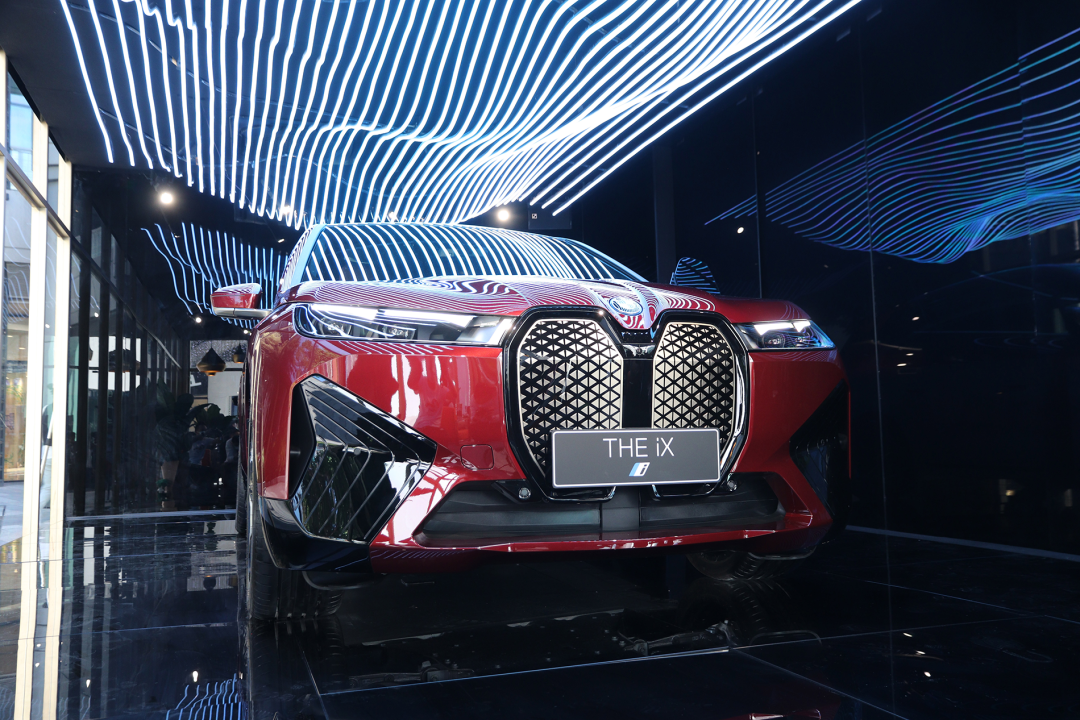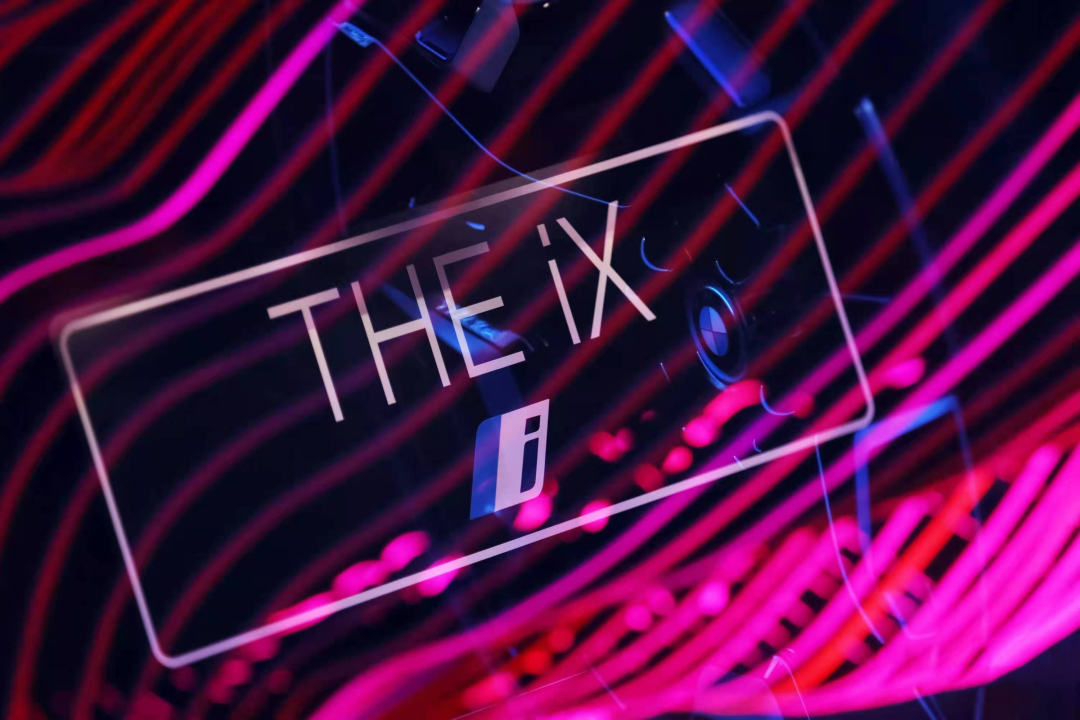How BMW Leads the Way in Luxury Brands’ Entry into New Energy
From button phones to smartphones with only a piece of glass left, we used to think that the change in mobile phone form only reflected different usage habits. However, smartphones have become an indispensable part of our lives. The changes that are happening in the car industry today are similar to what happened with smartphones, and it is also facing a transformative intelligent revolution, from energy sources to intelligent upgrades and replacements. Electric cars are gradually becoming a solution for intelligent technology and life travel in the future.
Many people think that electric cars are just cars that have replaced their energy sources. In fact, pure electric cars are not just cars with a different power source, they are also an important part of future intelligent technology life. Just like how Apple defeated Nokia and subverted many people’s perceptions of smartphones. In this direction of the larger environment, BMW, which has always been known for its exceptional driving control, what will be its future?
In fact, BMW is the first luxury brand in BBA to take action in the electric vehicle field. As early as 1972, BMW launched its first pure electric car, the BMW 1602, which was equipped with the Elektro-Antrieb electric drive system. However, limited by the battery technology at that time, it did not achieve mass production. In recent years, with pioneer models such as the i3, followed by the domestically produced iX3, BMW has never been stingy in demonstrating its strength in electrification. As intelligent technology becomes increasingly important in electric vehicles, BMW has launched another milestone-making vehicle, the BMW iX.
In September 2018, the BMW iNEXT concept car was unveiled, and two and a half years later, BMW officially brought the iX to the world. Unlike regular models, this flagship pure electric SUV has no numerical suffix and is branded as the iX. As BMW’s first car that was designed entirely from a pure electric development mindset, the BMW iX carries the latest technological achievements of BMW and also BMW’s understanding of future luxury travel.
Just like the human nervous system, electronic and electrical architecture is the foundation for cars to achieve digitization. By using sophisticated electronic architecture, BMW can integrate all innovations into a complete system. Therefore, as the BMW iX, it has applied BMW’s new electronic and electrical architecture, and for the first time uses gigabit Ethernet in the vehicle bus system, greatly increasing the speed of data transfer in the car.
As the smartest BMW car, the BMW iX will be equipped with about 40 different sensors for various automation and driving assistance functions, producing data that is 10-20 times more than current BMW production models. Equipped with gigabit Ethernet for the vehicle bus, the transmission speed can reach a total of 30Gbit per second, quickly transmitting the sensor data to several high-performance computers for processing, ensuring the safety of each function and keeping a smooth user experience.In a market where most car brands still compete in terms of how many radars can be applied to achieve a certain level of autonomous driving, the BMW iX has become the first luxury car to mass-produce with 5G technology, leading the way towards the future of smart cars.
The possibilities brought by 5G technology are endless, with faster data transmission speeds, lower latency, and greater potential for vehicle connectivity with the outside world. In the future, major improvements and innovations are expected in areas such as information, entertainment, driving safety and autonomous driving, which would greatly enhance the overall travel experience for users.
Take autonomous driving, for example, current technology mainly focuses on level L2 autonomous driving, which is mostly achieved through hardware such as millimeter-wave radar, laser radar, and front-facing cameras. Although these devices can perceive distances up to a few hundred meters and handle simple road conditions, they require human intervention when facing more complex conditions. This is where 5G technology comes into play, utilizing high-precision maps, centimeter-level positioning, path planning and prediction technologies, which can be the key to handling complex situations.
As the first luxury brand to mass-produce with 5G technology, BMW is also the first car manufacturer to apply eSIM in consumer-grade products. Physically, the embedded design of eSIM is solidly integrated into the vehicle communication module, making the vehicle-grade embedded SIM card unaffected by extreme temperatures, humidity, corrosion, or vibration. Moreover, users can choose their desired operator and download the chosen operator’s card data into the card through OTA, gaining access to the network of their chosen operator.
Luxurious Mobile Living Space
Opening the door, glimpse into the new representation of luxury in BMW iX beyond the core electrical framework. The simple and minimalistic aesthetics replaces the traditional engine and transmission system, leaving only necessary equipment such as the air conditioner ventilation ports and center console. Other equipment is cleverly hidden from sight, such as the Baohua Weijian 4D sound equipment, which was concealed under the seat and door panel fabric decorations. The center armrest also features a hidden control panel with a touchable iDrive crystal knob. Such an interior design concept not only showcases the future luxury that BMW is known for, but also delivers a comfortable, spacious, and functional living space.
This year marks the 20th anniversary of the BMW iDrive human-machine interaction system. The latest iDrive 8.0 system will also be installed in the BMW iX, aiming to provide users with the best interactive experience and driving experience through an emotional and intuitive design.
In terms of user interface design, the BMW iX adopts bold graphic design, futuristic visual quality, and rich light and shadow effects. The unique and intelligent new user interface presents information more smoothly, making the interaction between people and cars more natural. Based on the new interface layout and interaction concept, the three displays of the in-car panoramic display system, instrument panel, and central display screen can achieve coordination. According to the driver’s needs, information will be sorted by priority and presented on the screen that is most suitable for the driver’s observation, making it easy and convenient for the driver to obtain the information they need.
Moreover, with the launch of the BMW iX, the localization of BMW iDrive in China is also reflected. In the future, WeChat will settle in BMW, ensuring that users can be online in real time while driving safely, relieving offline anxiety. The in-car version of WeChat supports a large number of voice command interactions, and can also perform functions through various methods such as touching the central control screen and using the iDrive knob. In addition, Tencent’s small scene 2.0 is adapted to the new BMW iDrive-style UI design, not only fully optimizing functions, making the usage experience more efficient, convenient, and personalized, but also adding multiple mini-programs, making the vehicle another intelligent terminal after the mobile phone.

In terms of power, the BMW iX’s front and rear dual-motor drive system has a maximum output power of 385 kW, and the acceleration time is less than 5 seconds per 100 kilometers. The cobalt-free lithium battery pack integrated with CTP technology has a maximum capacity of 100 kW・h, and the cruising range under WLTP standard exceeds 600 kilometers. The data shows that the electric motor is completely independently designed, developed, and produced by BMW, and does not contain rare earth materials. The production of the cells and batteries uses 100% renewable energy. The concept of sustainable development runs through the BMW iX from start to finish.
What is behind BMW iX
 After seeing the BMW iX in person, it left me with many thoughts about what we truly need in future transportation. Do we need to connect with the virtual world of the cosmos, or do we need tangible feedback? Is completely forgetting about driving instincts with full automation necessary? These questions may not have definitive answers, but the BMW iX epitomizes BMW’s spirit of innovation. It taught me that real luxury is not just the result of AI, intelligent driving, and other such technologies. Rather, it lies in the wise use of environmentally-friendly materials and innovative shy tech invisible technology that bring greater convenience and a more humanized experience. The will to put people first is also crucial.
After seeing the BMW iX in person, it left me with many thoughts about what we truly need in future transportation. Do we need to connect with the virtual world of the cosmos, or do we need tangible feedback? Is completely forgetting about driving instincts with full automation necessary? These questions may not have definitive answers, but the BMW iX epitomizes BMW’s spirit of innovation. It taught me that real luxury is not just the result of AI, intelligent driving, and other such technologies. Rather, it lies in the wise use of environmentally-friendly materials and innovative shy tech invisible technology that bring greater convenience and a more humanized experience. The will to put people first is also crucial.
The BMW iX is not just BMW’s latest product, but also an embodiment of its innovative research and development methods. BMW is demonstrating its latest developments and design concepts for the luxuriant mobile space of future transportation in the design, automated driving, connected technology, electrification, and service innovation fields, which is a significant strategy for advancement.
According to relevant information previously released by BMW, the company will invest more than 30 billion euros in research and development by 2025 to bolster its position as a leading innovator in the automotive manufacturing industry. By 2023, the BMW Group will offer 13 pure electric vehicle models worldwide. By 2030, the BMW Group’s production of 10 million pure electric vehicles will deliver 50% of the Group’s total sales. The launch of the BMW iX marks a new phase in the company’s all-out assault on the new energy field. Are you ready for the future? BMW is.
This article is a translation by ChatGPT of a Chinese report from 42HOW. If you have any questions about it, please email bd@42how.com.
